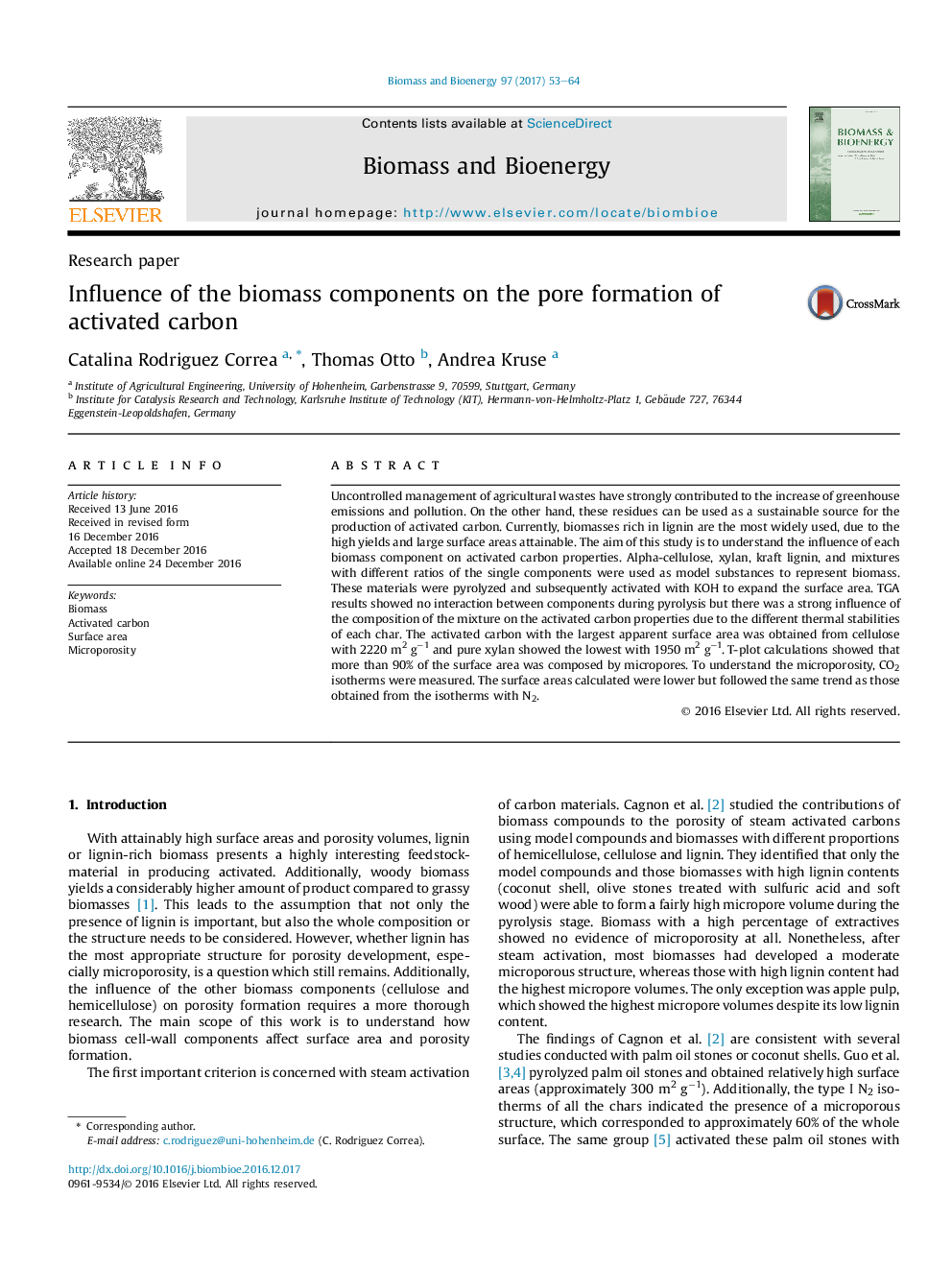| کد مقاله | کد نشریه | سال انتشار | مقاله انگلیسی | نسخه تمام متن |
|---|---|---|---|---|
| 4996277 | 1459796 | 2017 | 12 صفحه PDF | دانلود رایگان |
- Lignin rich biomass for activated carbon production makes sense for the high yields and high specific areas attainable.
- The presence of cellulose contributes to micropore formation.
- Lignin and xylan develop large surface areas but low microporosity compared to cellulose.
- There is no direct correlation between specific surface areas and adsorption potential.
Uncontrolled management of agricultural wastes have strongly contributed to the increase of greenhouse emissions and pollution. On the other hand, these residues can be used as a sustainable source for the production of activated carbon. Currently, biomasses rich in lignin are the most widely used, due to the high yields and large surface areas attainable. The aim of this study is to understand the influence of each biomass component on activated carbon properties. Alpha-cellulose, xylan, kraft lignin, and mixtures with different ratios of the single components were used as model substances to represent biomass. These materials were pyrolyzed and subsequently activated with KOH to expand the surface area. TGA results showed no interaction between components during pyrolysis but there was a strong influence of the composition of the mixture on the activated carbon properties due to the different thermal stabilities of each char. The activated carbon with the largest apparent surface area was obtained from cellulose with 2220Â m2Â gâ1 and pure xylan showed the lowest with 1950Â m2Â gâ1. T-plot calculations showed that more than 90% of the surface area was composed by micropores. To understand the microporosity, CO2 isotherms were measured. The surface areas calculated were lower but followed the same trend as those obtained from the isotherms with N2.
Journal: Biomass and Bioenergy - Volume 97, February 2017, Pages 53-64
